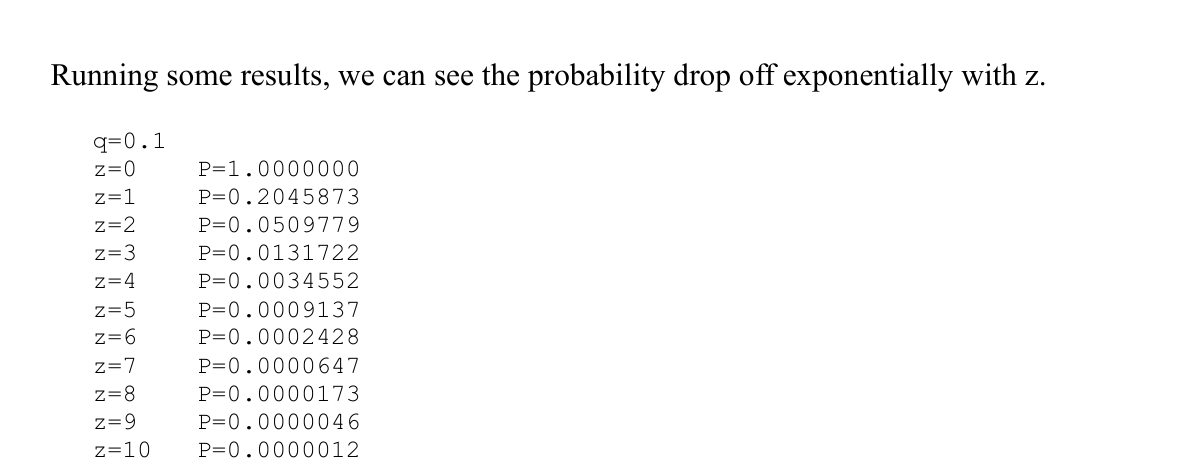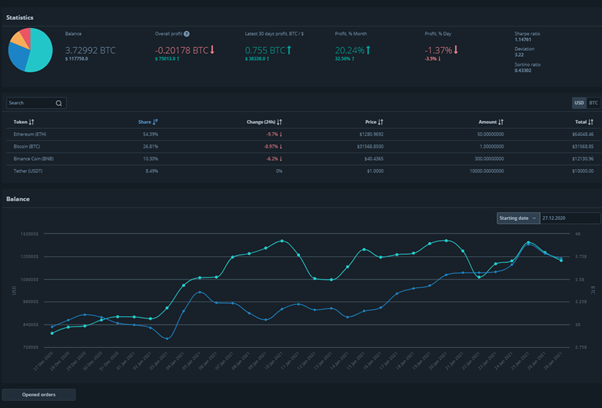2/
A more detailed explanation of the whole
"A double-spend broke Bitcoin" FUD that was circulated by an irresponsible publication.
1/
2/
3/
4/
The new block extends the chain, resolving the issue.
5/
6/
A 2-block reorganization happens less often, maybe a few times a year
A 3-block reorg is extremely rare. I don't think we've ever seen one
7/
8/
9/
10/
11/
12/
13/
14/
15/

I waited 3 confirmations after selling my car for $11,000 USD (IIRC). Was enough for me.
16/
17/
18/
19/
20/
21/
22/
23/
More from Bitcoin
I wanted to take some time to cover some resources I use in my daily $BTC trading. This will be a longer thread, so bear with it you will hopefully find something that will help you also. I will try to keep it concise so if there are any questions please DM me.
11. Portfolio Management & Trade Diary- https://t.co/KAig84dOsk
3Commas gives you the ability to see your full portfolio, mapping your balance and asset breakdown. You have access to all your trade history across all exchange in a single trade diary, saving time extracting taxes

Exceptional listen on #Bitcoin.
— Joseph Skewes (@josephskewes) January 26, 2021
In particular Nic's responses to Mike's aggressive anti-BTC stance.
One dispute with Nic: Even if crypto mail list was best place to announce BTC, if Satoshi wanted fair distribution, surely creating 50% of the supply by Nov 2012 was too fast? https://t.co/e1Hpx4wWOu
#Bitcoin transaction is never really final, given the energy required to keep the network running, and obviously its scale issues will only grow over time. That said, I actually though @nic__carter "won" the debate as it were, and I was unconvinced by the threat to national 2/n
security or undermining Fed policy angles Mike put forward. Two areas that are super interesting to me. One is the issue of #Bitcoin ownership, and how concentrated it is in terms of a small % of addresses that own most of it (2% addresses > 95% of holdings I think). 3/n
made great point a lot of this is omnibus/exchange related - so exchange or fund - ie @Grayscale holds #bitcoin for multiple investors. That may well be true - but it brings up 2 other issues. One - it proves that #bitcoin doesn't really "work" without 4/n
centralisation - as this implies most people need exchanges or funds (or @Paypal) to buy it. If so, that kills off a major "bitcoin is better than gold argument" - as in reality, gold is way more decentralised (from mine supply to ownership distribution). It also brings up a 5/n
Back with another #FreeLoveFriday. Last time, we covered how Mastercoin/@Omni_Layer pioneered digital asset issuance on blockchains. Today, let\u2019s discuss @Chainlink and the vital role it plays in connecting blockchains to the real world. https://t.co/0poYIBtGrt
— Emin G\xfcn Sirer (@el33th4xor) January 22, 2021
In my thread about Mastercoin, I briefly touched on the vital role fiat-backed stablecoins play in crypto markets, but there’s a catch with them:
The counterparty risk of a third-party holding fiat in reserves.
Enter MakerDAO, which set out to create a decentralized, collateral-backed cryptocurrency, DAI, that would be “soft-pegged” to the U.S. Dollar using the power of algorithms. In crypto tradition, its supporters said trust game theory, not operators.
In 2017, MakerDAO published a whitepaper describing a system where anyone could create DAI by leveraging ETH as collateral to create Collateralized Debt Positions. Essentially, you take out a digital USD loan against your crypto.
The game theory of the system is structured such that DAI issuance is controlled to keep the price pegged to $1.00. In essence, it buffers the fluctuations of the underlying collateral to create a synthetic dollar bill.
We were offered a very open insight (but slightly flawed analysis) into top level policy perspective behind the crack down on selfhosted wallets.
https://t.co/1LTzrxHbgs 1/32
ECB President Christine Lagarde called for global regulation of #Bitcoin, saying the digital currency had been used for money laundering activities in some instances and that any loopholes needed to be closed. Follow #ReutersNext updates here: https://t.co/4MgFy4jnw5 pic.twitter.com/qlBtoDuZLW
— Reuters (@Reuters) January 13, 2021
'It is a speculative asset, by any account. If you look at the price movements... '
It starts with an economic price perspective and we can learn that ECB is closely monitoring this price movement as one of the many indicators.
So we are in the classic central bank frame 2/32
'Those who thought it would turn into a currency. Sorry, it is an asset not a currency.'
Here she summarises a classic debate on what is currency and what is needed for that. Based on the holy three: unit of account, means of payment, store of value. 3/32
The summary is classic, but too narrow and does not incorporate the wider financial history viewpoints on money, currencies and the way we pay. 4/32
ECB overlooks the de facto unit of account role of bitcoin, having been used to 200 years of having cash around whic is both the unit of account and a means of payment. 5/32
You May Also Like
Unfortunately the "This work includes the identification of viral sequences in bat samples, and has resulted in the isolation of three bat SARS-related coronaviruses that are now used as reagents to test therapeutics and vaccines." were BEFORE the

chimeric infectious clone grants were there.https://t.co/DAArwFkz6v is in 2017, Rs4231.
https://t.co/UgXygDjYbW is in 2016, RsSHC014 and RsWIV16.
https://t.co/krO69CsJ94 is in 2013, RsWIV1. notice that this is before the beginning of the project
starting in 2016. Also remember that they told about only 3 isolates/live viruses. RsSHC014 is a live infectious clone that is just as alive as those other "Isolates".
P.D. somehow is able to use funds that he have yet recieved yet, and send results and sequences from late 2019 back in time into 2015,2013 and 2016!
https://t.co/4wC7k1Lh54 Ref 3: Why ALL your pangolin samples were PCR negative? to avoid deep sequencing and accidentally reveal Paguma Larvata and Oryctolagus Cuniculus?











